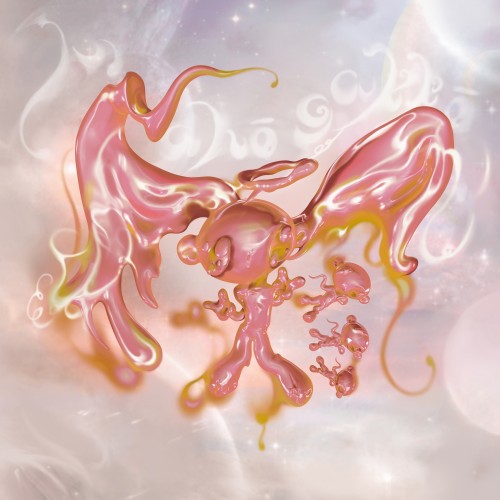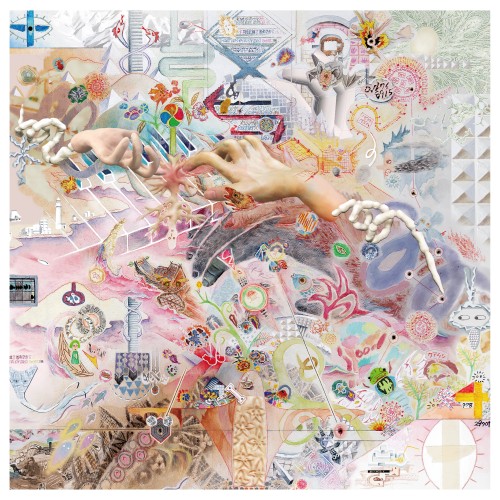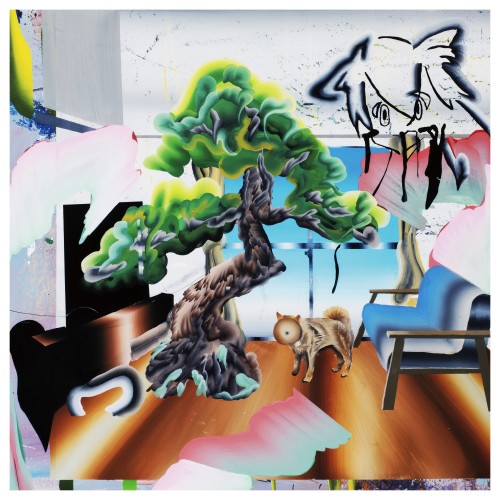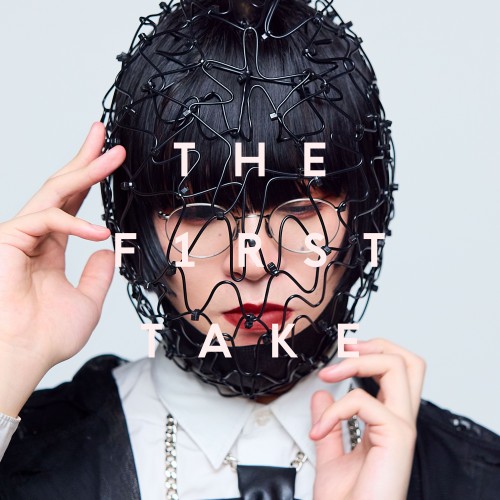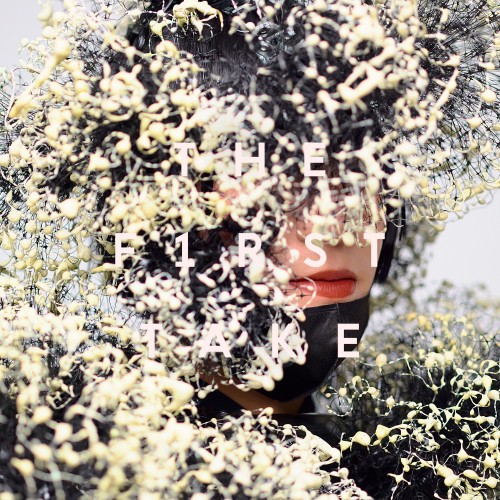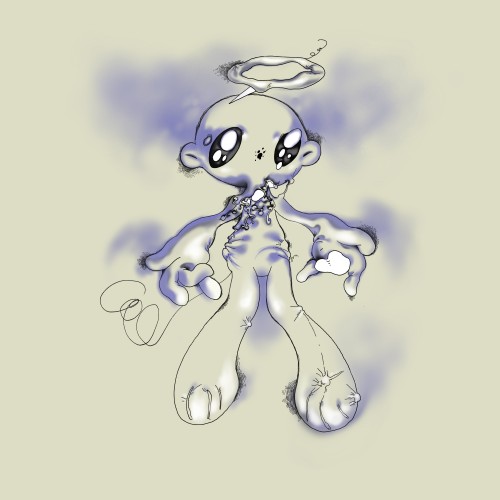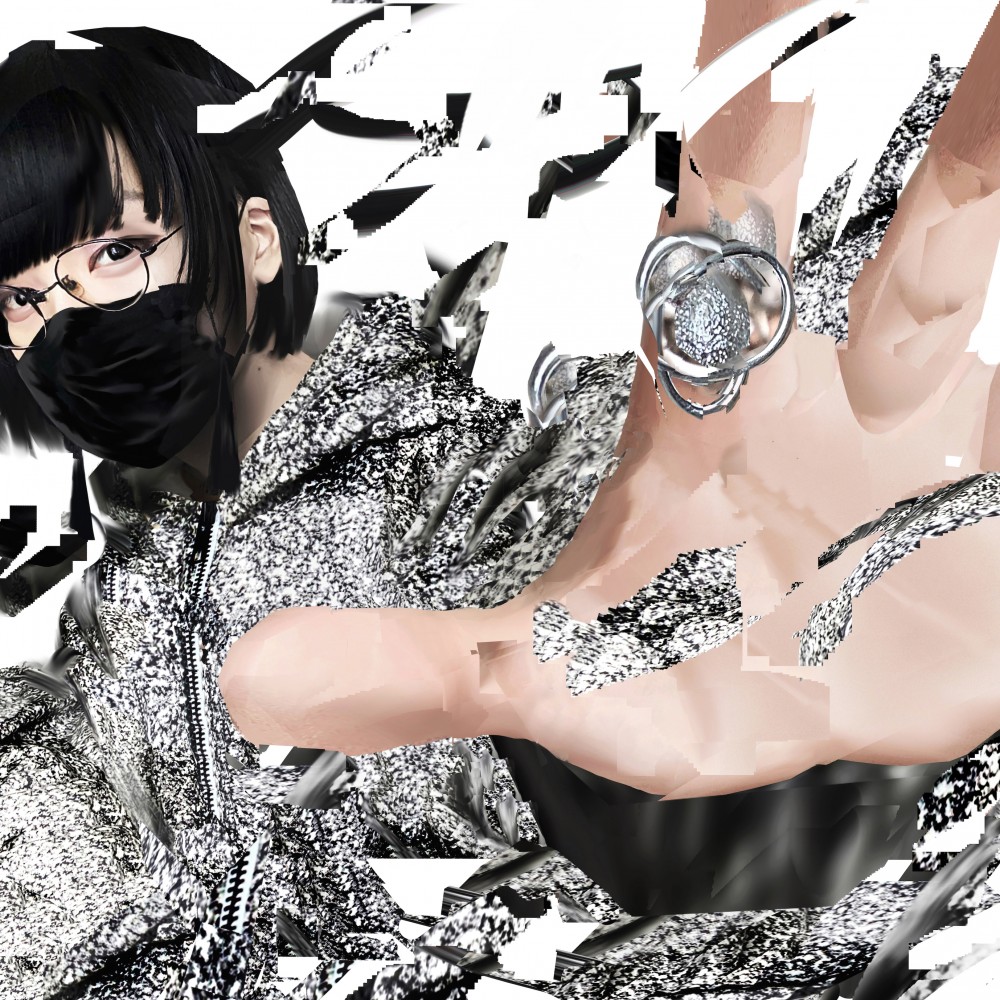
Hakushi Hasegawa
On Brainfeeder
BIOGRAPHY
When Japanese artist Hakushi Hasegawa released their free EP on Japanese net label Maltine Records in 2017, for the tight group of Japanese music fans and older industry heads that stay well within the tastemaker platforms’ orbit, it really did feel like a momentous occasion. Here was a brand new artist bursting onto an unprepared Japanese underground with a debut that exploded with a kaleidoscope of full-sensory rhythmic assaults, sparkling synths and lustrous hues all ...
When Japanese artist Hakushi Hasegawa released their free EP on Japanese net label Maltine Records in 2017, for the tight group of Japanese music fans and older industry heads that stay well within the tastemaker platforms’ orbit, it really did feel like a momentous occasion. Here was a brand new artist bursting onto an unprepared Japanese underground with a debut that exploded with a kaleidoscope of full-sensory rhythmic assaults, sparkling synths and lustrous hues all beautifully wrapped up in a jazz sensibility that oozed decades-honed chops. Complex chord progressions and a depth of musicality that had nods to bygone eras of Tokyo 90s nightlife.
Rumours swirled, the internet lit up and people took notice, all wondering who this incredible and very mysterious new artist was. The very legendary Japanese record label Musicmine, responsible for some of Japan’s greatest electronic artists like Ken Ishii, Rei Harakami and Susumu Yokota was one of them.
In December 2018 Hakushi made their debut proper on Musicmine with the “草木萌動” (Somoku Hodo) EP and the impact was seismic. From the first minute of the title track, an explosive jazz-fuelled onslaught, the listener was spun into a dizzy state of disorientation before being gently pulled back to earth with the sweet, nurturing emotion of Hakushi’s voice. A wonderful tug-of-war that would continue through to the end the track’s end, not before soaring to the giddy heights of Japanese pop perfection. If that wasn’t enough, what really made jaws hit the floor was the second track, 毒 (Doku) an absolutely blistering assault of breakcore jungle drums, chromatic chords and a saccharine vocal performance from Hakushi that magically kept all of the elements in balance. Never had chaos sounded sweeter and never had sweetness sounded more utterly chaotic. To draw on a music journalist cliche long dead and buried, it really did feel like a long-lost Squarepusher, Chick Corea and Cornelius session had been given a 21st century sonic overhaul.
Whatever it was, it sounded like the future of Japanese music.
Hakushi Hasegawa was born in Tokyo in 1998. Effectively part of a new generation of young Japanese who were raised on the internet and by the time they hit that age where the training wheels were off, were running amok through the endless corridors, nooks and crannies of the world wide web. By the time Hakushi had entered middle school, an absolute thirst for musical knowledge was being satiated by web platforms like domestic video streamer Nico Nico, YouTube and Soundcloud which allowed for unbridled, borderless musical exploration throughout time. Already producing music on their laptop, Hakushi took their passion for music and composition all the way to study at Music University.
Less than a year after the Somoku Hodo EP, in the first year of the new Japanese era “Reiwa”, Hakushi released their debut album “Air Ni Ni” on Musicmine and all the musicality, unhinged energy and boundary-smashing experimentation that streaked through their earlier work was crystallised into a wholly idiosyncratic sound. From the upbeat, fun fair jazz of “Only You” to the more familiar, skittering workouts on tracks like “o(__*)” , to the tight staccato groove of “Cold Goat”, Air Ni Ni was a technicoloured patchwork quilt stitched together with the many influences and references lifted from the progressive eras of jazz and electronic music alongside the very distinctive melodic characteristics and unique approach to arrangement gleaned from the hyper coloured, hyper cute of J-Pop. A mosaic of so many different puzzle pieces so immense that you no longer heard or recognized the individual nods any more.
Remarkable in its musical depth and complexity whilst at the same so utterly, utterly, utterly fun, the album would be widely praised by the Japanese press with many of the domestic outlets that mattered declaring Air Ni Ni “Album of the Year”. At this point, some of the people starting to take notice of Hakushi Hasegawa belonged to some of the most influential independent labels in the world and it was only a matter of time before the world would find out about Hakushi Hasegawa, at this point still only 20 years old.
But of course the universe had a different plan in place for Hakushi Hasegawa and every other human being on the planet in 2020. Whilst strict lockdowns all but decimated Tokyo’s live music scene (and the live music scenes of most major music hubs globally), that early phase of the global pandemic did offer some wonderful moments of global unity via live streaming events, one of which was Porter Robinsons’ “Secret Sky Festival” which became Hakushi’s debut onto the world stage. For the global audience that were lucky enough to take a punt with this unknown name, they were rewarded with a performance so hyperkinetic that few could believe what they were witnessing.
That same year, Haksuhi gifted their ever-growing Japanese fans with an EP of covers of Japanese pop songs on the Bones of Dreams Attacked!”. In stark contrast to the wonderfully chaotic energy of Air Ni Ni, it was intimate, emotional and displayed an absolute mastery of form and a less-is-more approach that showed that Hakushi could still dazzle even at a whisper. The following year Hakushi was invited to take part in another pandemic-era online event, this time for the Flying Lotus presented ‘The Hit’ and the performance all but sealed the future for one of the most dynamic artists to come out of Japan in decades.
For those that have been following Hakiushi’s career closely, the past few years have seen a career ascendance that’s unparalleled. One minute composing music for Japanese television dramas the next finding themselves centrecourt Paris Fashion Week soundtracking the catwalk shows of equally boundary pushing, wickedly innovative fashion brand noir kei ninomiya, part of the Comme des Garçons family. In between all that, finding time to wow thousands on the home front at a key Fuji Rock Festival performance in 2023 and being invited to cover Paul McCartney’s quintessential Christmas anthem “Wonderful Christmastime” for an Apple Music Christmas compilation, earning radio support from Zane Lowe that same year.
Fast forward to 2024 and Hakushi Hasegawa’s eagerly awaited Brainfeeder Records debut “Mahōgakkō” (which means “Magic School” in English) is set to be responsible for a fair few more jaws hitting floors across the planet. That Hakushi is the first Japanese artist to sign to Brainfeeder Records is significant, not just for Japan but for the label itself, whose roster of artists have always worn the monumental impact that Japanese music and popular culture has had on them well and truly on their sleeves. It’s also incredibly meaningful for Hakushi themselves: “It is a very big and honourable thing to be a part of Brainfeeder, in terms of the possibility of reaching out to listeners and musical environments that I have not been able to reach before. What I think the most is what can I do within the rich context of the label's history. I probably could not have made this album with anyone other than Brainfeeder, and future works will reflect this experience and feeling. Where I find myself is very important to me in terms of my creative theory.”
“Mahōgakkō'' is the sound of a group of mischievous yet well-intentioned kids smashing down the gates to an abandoned amusement park with a battering ram and a menagerie of exotic and beyond-exotic birds, mammals and never-before-seen creatures bursting through the turnstiles. That balance of pop and pandemonium already well perfected in early works is pushed to the absolute limit, with hyperspeed jungle and breakcore traded up for the even more pummeling onslaughts inspired by Tanzanian singeli, speed metal and the upper limits of accelerated rhythms pushing to such extremes that they become just another texture in Hakushi’s wild sonic landscapes. Always testing just how far things can be pushed until the scales tip too far in one direction. But they never do. Everything is organised and has been calculated. In Hakushi’s own words: “The balance is probably the only thing in my work that is intentional and very important to me. In many of my songs, I use a scale that I personally call the "Explanatory Ratio" to guide my work. This is not a sophisticated musical theory at all, but simply a subjective scale that looks at the balance of sounds that are explainable to me and sounds that are not explainable to me, and whether or not they are distributed in the ratio that I set for each piece. This is the only thing I am intentional about in my work.”
“Mahōgakkō” is Hakushi’s ultimate Trojan Horse yet, the mayhem never overwhelms and just when your senses are bordering on overloaded, Hakushi gifts you a moment of sweet reprieve before the roller coaster sets off again with hectic syncopations and harmonic jumps not for the faint of heart.
What’s immediately noticeable on “Mahōgakkō” is that the boundary-smashing sonic adventures have been further enhanced with the addition of Hakushi’s manipulation of the sounds themselves. Taking inspiration from contemporaries like Arca and the sadly departed SOPHIE, individual sounds are synthesized, twisted and morphed well beyond recognition to create a complex array of peculiarities and textures.
“It is only recently that I became aware of sound design and that this tool that I touch every day, called a computer, is capable of creating a multitude of tones. This realization came after the release of "Air Ni Ni," and the last three and a half years have been a complete struggle with that realization. I think I am like a baby when it comes to sound design. I am still intrigued and fascinated by the sound itself, but I don't have control over it. I think that genuine confusion is well represented on this album.”
What really stands out however is Hakushi’s manipulation and implementation of their own voice, shifting and morphing like liquid mercury from falsetto to baritone to outer-dimensional. This fluidity not only a perfect exemplar of Hakushi’s proud pronouncement of their non-binary gender pronouns in a nation where such is all but rare, but a key concept behind the creation of “Mahōgakkō” itself: “In the beginning I had a very clear intention. It is a taunt to the body - in this case, myself - that is temporarily constructed in the art of reproduction. So I was constantly increasing the ratio of my attention to the impossibilities and possibilities of my own voice. But as I worked on the production, I realized that the perspective I was taking on the body within the cross-over voice-acoustic-music field was already very binary. I then changed my ultimate goal. I reconsidered that I should not practice a variation of a certain voice, but a deformation of the body related to a certain music. And I honestly am not sure if that is working. I am still pretty much in confusion.”
With “Mahōgakkō” there is no doubt that this is the sound of a once-in-a-generation artist not just breaking boundaries for Japanese music but global music culture and it will leave you with no doubt that Hakushi Hasegawa is only really just getting started.
Hakushi Hasegawa
On Brainfeeder
Singles
Latest News
BIOGRAPHY
When Japanese artist Hakushi Hasegawa released their free EP on Japanese net label Maltine Records in 2017, for the tight group of Japanese music fans and older industry heads that stay well within the tastemaker platforms’ orbit, it really did feel like a momentous occasion. Here was a brand new artist bursting onto an unprepared Japanese underground with a debut that exploded with a kaleidoscope of full-sensory rhythmic assaults, sparkling synths and lustrous hues all beautifully wrapped ...
When Japanese artist Hakushi Hasegawa released their free EP on Japanese net label Maltine Records in 2017, for the tight group of Japanese music fans and older industry heads that stay well within the tastemaker platforms’ orbit, it really did feel like a momentous occasion. Here was a brand new artist bursting onto an unprepared Japanese underground with a debut that exploded with a kaleidoscope of full-sensory rhythmic assaults, sparkling synths and lustrous hues all beautifully wrapped up in a jazz sensibility that oozed decades-honed chops. Complex chord progressions and a depth of musicality that had nods to bygone eras of Tokyo 90s nightlife.
Rumours swirled, the internet lit up and people took notice, all wondering who this incredible and very mysterious new artist was. The very legendary Japanese record label Musicmine, responsible for some of Japan’s greatest electronic artists like Ken Ishii, Rei Harakami and Susumu Yokota was one of them.
In December 2018 Hakushi made their debut proper on Musicmine with the “草木萌動” (Somoku Hodo) EP and the impact was seismic. From the first minute of the title track, an explosive jazz-fuelled onslaught, the listener was spun into a dizzy state of disorientation before being gently pulled back to earth with the sweet, nurturing emotion of Hakushi’s voice. A wonderful tug-of-war that would continue through to the end the track’s end, not before soaring to the giddy heights of Japanese pop perfection. If that wasn’t enough, what really made jaws hit the floor was the second track, 毒 (Doku) an absolutely blistering assault of breakcore jungle drums, chromatic chords and a saccharine vocal performance from Hakushi that magically kept all of the elements in balance. Never had chaos sounded sweeter and never had sweetness sounded more utterly chaotic. To draw on a music journalist cliche long dead and buried, it really did feel like a long-lost Squarepusher, Chick Corea and Cornelius session had been given a 21st century sonic overhaul.
Whatever it was, it sounded like the future of Japanese music.
Hakushi Hasegawa was born in Tokyo in 1998. Effectively part of a new generation of young Japanese who were raised on the internet and by the time they hit that age where the training wheels were off, were running amok through the endless corridors, nooks and crannies of the world wide web. By the time Hakushi had entered middle school, an absolute thirst for musical knowledge was being satiated by web platforms like domestic video streamer Nico Nico, YouTube and Soundcloud which allowed for unbridled, borderless musical exploration throughout time. Already producing music on their laptop, Hakushi took their passion for music and composition all the way to study at Music University.
Less than a year after the Somoku Hodo EP, in the first year of the new Japanese era “Reiwa”, Hakushi released their debut album “Air Ni Ni” on Musicmine and all the musicality, unhinged energy and boundary-smashing experimentation that streaked through their earlier work was crystallised into a wholly idiosyncratic sound. From the upbeat, fun fair jazz of “Only You” to the more familiar, skittering workouts on tracks like “o(__*)” , to the tight staccato groove of “Cold Goat”, Air Ni Ni was a technicoloured patchwork quilt stitched together with the many influences and references lifted from the progressive eras of jazz and electronic music alongside the very distinctive melodic characteristics and unique approach to arrangement gleaned from the hyper coloured, hyper cute of J-Pop. A mosaic of so many different puzzle pieces so immense that you no longer heard or recognized the individual nods any more.
Remarkable in its musical depth and complexity whilst at the same so utterly, utterly, utterly fun, the album would be widely praised by the Japanese press with many of the domestic outlets that mattered declaring Air Ni Ni “Album of the Year”. At this point, some of the people starting to take notice of Hakushi Hasegawa belonged to some of the most influential independent labels in the world and it was only a matter of time before the world would find out about Hakushi Hasegawa, at this point still only 20 years old.
But of course the universe had a different plan in place for Hakushi Hasegawa and every other human being on the planet in 2020. Whilst strict lockdowns all but decimated Tokyo’s live music scene (and the live music scenes of most major music hubs globally), that early phase of the global pandemic did offer some wonderful moments of global unity via live streaming events, one of which was Porter Robinsons’ “Secret Sky Festival” which became Hakushi’s debut onto the world stage. For the global audience that were lucky enough to take a punt with this unknown name, they were rewarded with a performance so hyperkinetic that few could believe what they were witnessing.
That same year, Haksuhi gifted their ever-growing Japanese fans with an EP of covers of Japanese pop songs on the Bones of Dreams Attacked!”. In stark contrast to the wonderfully chaotic energy of Air Ni Ni, it was intimate, emotional and displayed an absolute mastery of form and a less-is-more approach that showed that Hakushi could still dazzle even at a whisper. The following year Hakushi was invited to take part in another pandemic-era online event, this time for the Flying Lotus presented ‘The Hit’ and the performance all but sealed the future for one of the most dynamic artists to come out of Japan in decades.
For those that have been following Hakiushi’s career closely, the past few years have seen a career ascendance that’s unparalleled. One minute composing music for Japanese television dramas the next finding themselves centrecourt Paris Fashion Week soundtracking the catwalk shows of equally boundary pushing, wickedly innovative fashion brand noir kei ninomiya, part of the Comme des Garçons family. In between all that, finding time to wow thousands on the home front at a key Fuji Rock Festival performance in 2023 and being invited to cover Paul McCartney’s quintessential Christmas anthem “Wonderful Christmastime” for an Apple Music Christmas compilation, earning radio support from Zane Lowe that same year.
Fast forward to 2024 and Hakushi Hasegawa’s eagerly awaited Brainfeeder Records debut “Mahōgakkō” (which means “Magic School” in English) is set to be responsible for a fair few more jaws hitting floors across the planet. That Hakushi is the first Japanese artist to sign to Brainfeeder Records is significant, not just for Japan but for the label itself, whose roster of artists have always worn the monumental impact that Japanese music and popular culture has had on them well and truly on their sleeves. It’s also incredibly meaningful for Hakushi themselves: “It is a very big and honourable thing to be a part of Brainfeeder, in terms of the possibility of reaching out to listeners and musical environments that I have not been able to reach before. What I think the most is what can I do within the rich context of the label's history. I probably could not have made this album with anyone other than Brainfeeder, and future works will reflect this experience and feeling. Where I find myself is very important to me in terms of my creative theory.”
“Mahōgakkō'' is the sound of a group of mischievous yet well-intentioned kids smashing down the gates to an abandoned amusement park with a battering ram and a menagerie of exotic and beyond-exotic birds, mammals and never-before-seen creatures bursting through the turnstiles. That balance of pop and pandemonium already well perfected in early works is pushed to the absolute limit, with hyperspeed jungle and breakcore traded up for the even more pummeling onslaughts inspired by Tanzanian singeli, speed metal and the upper limits of accelerated rhythms pushing to such extremes that they become just another texture in Hakushi’s wild sonic landscapes. Always testing just how far things can be pushed until the scales tip too far in one direction. But they never do. Everything is organised and has been calculated. In Hakushi’s own words: “The balance is probably the only thing in my work that is intentional and very important to me. In many of my songs, I use a scale that I personally call the "Explanatory Ratio" to guide my work. This is not a sophisticated musical theory at all, but simply a subjective scale that looks at the balance of sounds that are explainable to me and sounds that are not explainable to me, and whether or not they are distributed in the ratio that I set for each piece. This is the only thing I am intentional about in my work.”
“Mahōgakkō” is Hakushi’s ultimate Trojan Horse yet, the mayhem never overwhelms and just when your senses are bordering on overloaded, Hakushi gifts you a moment of sweet reprieve before the roller coaster sets off again with hectic syncopations and harmonic jumps not for the faint of heart.
What’s immediately noticeable on “Mahōgakkō” is that the boundary-smashing sonic adventures have been further enhanced with the addition of Hakushi’s manipulation of the sounds themselves. Taking inspiration from contemporaries like Arca and the sadly departed SOPHIE, individual sounds are synthesized, twisted and morphed well beyond recognition to create a complex array of peculiarities and textures.
“It is only recently that I became aware of sound design and that this tool that I touch every day, called a computer, is capable of creating a multitude of tones. This realization came after the release of "Air Ni Ni," and the last three and a half years have been a complete struggle with that realization. I think I am like a baby when it comes to sound design. I am still intrigued and fascinated by the sound itself, but I don't have control over it. I think that genuine confusion is well represented on this album.”
What really stands out however is Hakushi’s manipulation and implementation of their own voice, shifting and morphing like liquid mercury from falsetto to baritone to outer-dimensional. This fluidity not only a perfect exemplar of Hakushi’s proud pronouncement of their non-binary gender pronouns in a nation where such is all but rare, but a key concept behind the creation of “Mahōgakkō” itself: “In the beginning I had a very clear intention. It is a taunt to the body - in this case, myself - that is temporarily constructed in the art of reproduction. So I was constantly increasing the ratio of my attention to the impossibilities and possibilities of my own voice. But as I worked on the production, I realized that the perspective I was taking on the body within the cross-over voice-acoustic-music field was already very binary. I then changed my ultimate goal. I reconsidered that I should not practice a variation of a certain voice, but a deformation of the body related to a certain music. And I honestly am not sure if that is working. I am still pretty much in confusion.”
With “Mahōgakkō” there is no doubt that this is the sound of a once-in-a-generation artist not just breaking boundaries for Japanese music but global music culture and it will leave you with no doubt that Hakushi Hasegawa is only really just getting started.

